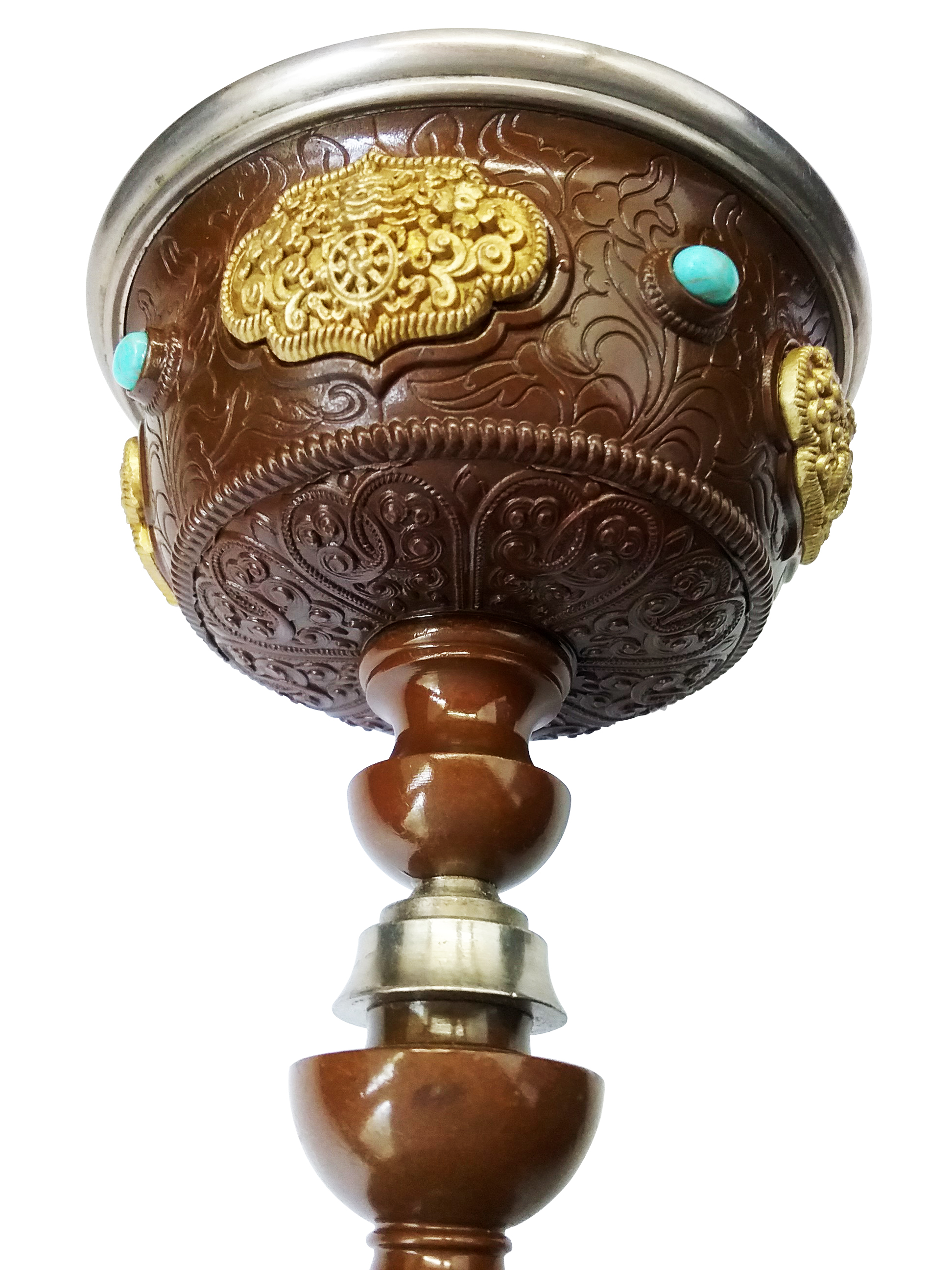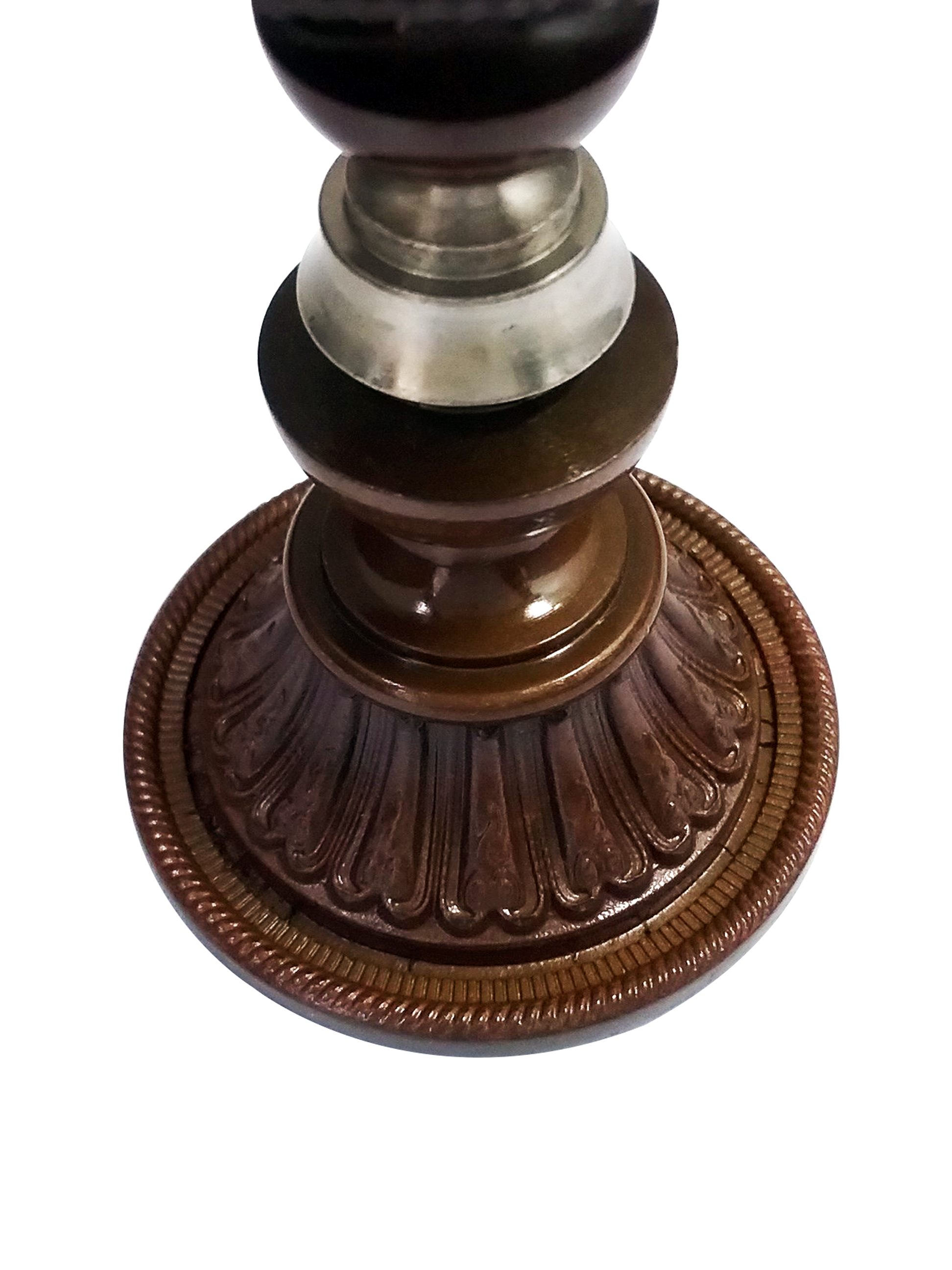|
|
|
Wholesalers: |

|
/ |
|
|
|
|
|
|
|
|
| Earth provides enough to satisfy every mans need, but not every mans greed" Mahatma Gandhi (1869-1948) |
|
|
|
|
|
|
|
|
|
|
|
|
|
|
|
|
|
|
|
| Serkem Copper with stainless border L |
|
|
|
|
|
Sku#:3169
|
|
|
Wholesale price |
US |
XXX.XX |
|
《In order to view the wholesale price .
Please Apply to be a wholesalers》
|
|
|
|
|
 |
|
Please contact us to verify availability. 1-626-354-6228
Email: zambalallc@gmail.com
America area customers can view on this website first.
https://FlyingMystics.org/ |
|
|
|
|
|
|
Material: Red copper. Stainless steel rim
Size: Diameter of the base plate is about 14.7 cm. Total height is about 16.5 cm
Description:
The "Dharmapala offering cup" in Tibetan Buddhism (often called **torma** or **bali** in Tibetan, or specifically refers to the vessel for offering to the Dharmapala) is a ritual utensil used to worship the Dharmapala. It is mainly used in religious ceremonies of Tibetan Buddhism, especially when offering, praying or appeasing the Dharmapala. The following is a brief description of the origin and use of the Dharmapala offering cup:
**Origin**
The origin of the Dharmapala offering cup is closely related to the worship of the Dharmapala in Tibetan Buddhism. Tibetan Buddhism combines elements of Indian Buddhism, Bon religion (Bon) and local folk beliefs. The Dharmapala is regarded as a supernatural force that protects the Dharma, temples and practitioners. The use of the offering cup can be traced back to the ritual tradition of Tantric Buddhism, especially the practices related to the offering ceremony in Vajrayana. These offering cups are usually used to hold offerings to show respect to the guardian deities and pray for their blessings and protection.
In the history of Tibetan Buddhism, the worship of guardian deities gradually became institutionalized with the development of major sects (such as Nyingma, Kagyu, Sakya, Gelug, etc.). The shape and use of the offering cups also vary depending on the sect and the specific guardian deity. For example, some guardian deities (such as Mahakala or Palden Lhamo) have their own exclusive offering methods, and the design of the offering cups and the content of the offerings will be adjusted according to the requirements of the ritual.
**Usage**
The guardian offering cups are usually used in specific religious ceremonies, daily offerings or major ceremonies. The following are its main uses and uses:
1. **Shape and material of the offering cup**:
- The offering cup is usually a small container made of metal (such as copper, silver) or ceramics, mostly in the shape of a bowl or cup, with a simple design but sometimes engraved with auspicious patterns or mantras.
- Some offering cups are designed for specific Dharma protectors and may have unique shapes or decorations, such as skull-shaped offering cups (kapalas) for certain wrathful Dharma protectors.
- Offerings are usually placed in the offering cups, such as tsampa (roasted barley flour), ghee, wine, water, flowers, spices, etc., and the specific content depends on the ritual.
2. **Purpose of offerings**:
- **Pray for blessings**: Offering to the Dharma protectors to obtain their protection, help practitioners remove obstacles, subdue demons and enemies, and ensure the success of Buddhist careers.
- **Appease the Dharma protectors**: Some Dharma protectors (especially secular Dharma protectors) are believed to have fierce temperaments and need to be offered regularly to appease their power and avoid negative effects.
- **Purification and gratitude**: Offering cups are also used to purify the temple or thank the Dharma protectors for their protection.
3. **Use in rituals**:
- **Daily offerings**: In temples or personal altars, the offering cup is usually placed in front of the guardian deity or altar, with offerings inside, and offerings are made accompanied by chanting and mantras (such as the guardian's exclusive mantras).
- **Specific pujas**: In large guardian ceremonies (such as the Mahakala puja), the offering cup may be used together with a torma (a special offering sculpture), and the offerings will be more exquisite and arranged according to the requirements of the ritual.
- **Offering handling**: The offerings are usually handled after the ceremony, such as distributing them to participants, scattering them in nature, or burning or discarding them in a clean place according to the requirements of the ritual.
4. **Precautions for offering**:
- The offering cup must be kept clean, and the offerings must be fresh and meet the requirements of the ritual.
- When offering, you must be respectful and use specific visualizations and mantras to enhance the effectiveness of the offering.
- Different Dharma protectors have different preferences. For example, Mahakala prefers alcoholic offerings, while other Dharma protectors may prefer vegetarian offerings, depending on the sect and tradition.
**Culture and symbolism**
The Dharma protector offering cup is not only a practical ritual tool, but also carries profound symbolic meaning. It represents the practitioner's piety and dependence on the Dharma protector, and also reflects the concept of "offering" as part of the practice in Tibetan Buddhism, accumulating merit and purifying karma through giving and dedication.
The Dharma protector offering cup is an important tool for offering to the Dharma protector in Tibetan Buddhism. It originated from the tradition of integrating Tantric rituals with Tibetan culture. It plays a key role in daily offerings, ceremonies and special rituals, and is used to pray for the blessing of the Dharma protector, appease the gods or purify the temple. When using it, it is necessary to follow specific rituals. The choice of offerings and offering cups varies depending on the Dharma protector and the sect, reflecting the richness and diversity of Tibetan Buddhism.





|
|
|
 |
|
|
|
|
|
|
|
|
|
|
|
|
|
|
|
|
© 2025 Zambala inc. All Rights Reserved. No part of this site may be reproduced without our written Permission.
Service Mail: ZambalaLLC@gmail.com
Phone: (626) 289-9787 or 1(888)Zambala (926-2252)
Fax: (626) 289-9719
1904 West Valley Blvd. Alahambra, CA 91803 USA
Unless stated otherwise in content's license. Design By
|
|
|